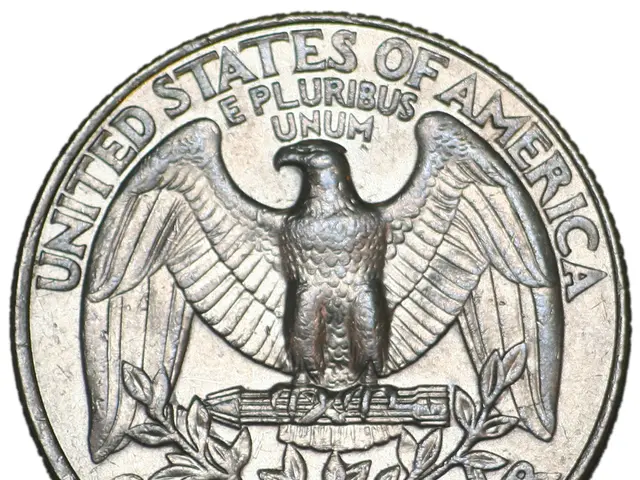Oil prices poised for steepest monthly slide since year 2021, according to Reuters report.
oil prices are plummeting, on track for their biggest monthly drop since November 2021, according to Reuters on April 30. This trend poses a significant challenge for Russia, whose primary financing comes from energy revenues in the midst of its conflict with Ukraine.
As Western sanctions haven't hindered Moscow's energy sales, the price slump could now pinch Russia's war budget. Brent crude dropped a further 1.2% to $63.48 per barrel, while U.S. West Texas Intermediate crude decreased by 1.2%, or 74 cents, to $59.68. In April, both benchmarks have lost around 15-16%.
U.S. crude inventories grew by 3.8 million barrels last week, stoking concerns of a global market oversupply. The downturn in crude prices began in early April following U.S. President Donald Trump's announcement of new tariffs on imports, triggering China's retaliatory tariffs, igniting a trade war between the world's biggest oil consumers.
Recent data, as reported by Reuters, indicates economic turmoil in key markets. The U.S. economy contracted in the first quarter, while Chinese manufacturing activity plummeted at its fastest rate in 16 months.
Earlier this month, Kremlin spokesperson Dmitry Peskov acknowledged that Moscow was closely watching oil markets as Urals crude prices plummeted towards $50 per barrel. This decline is particularly unsettling for Russia, as its 2025 budget was designed based on oil prices of $70 per barrel.
The Russian Finance Ministry reported a 17% year-on-year decrease in oil and gas revenue in March, totaling 1.08 trillion rubles ($12.8 billion). This decline resulted in a loss of approximately 230 billion rubles ($2.7 billion) in tax income compared to March 2024.
Russia must navigate the pressure of continued oil price drops, heightened by global recession risks and trade war dynamics. If sub-$60 oil prices persist, it could potentially force Russia to make difficult decisions between military and social spending, as its defense expenditures are projected to reach 6.3% of GDP in 2025 – the highest level since the Cold War. Analysts warn that this percentage could change under sustained low prices.
Historically, oil and gas revenues account for 30-50% of federal budgets, making fiscal stability highly sensitive to oil prices. Trade wars and OPEC+ production increases may cause oil prices to remain low, with the OIES forecasting a 2025 average of $71.7/barrel (Brent) – a challenging benchmark for Russia's current $56 Urals price. Furthermore, if the ruble strengthens, the dollar-denominated oil revenues could decrease, exacerbating Russia's financial pressure.
In light of these challenges, the long-term sustainability of Russia's war economy will depend on avoiding prolonged sub-$60 oil prices, a scenario analysts now consider increasingly likely.
- As Brent crude dropped further to $63.48 per barrel and U.S. West Texas Intermediate decreased to $59.68, the oil-and-gas industry is facing a significant challenge for Russia, whose primary financing comes from these revenues amidst its conflict with Ukraine.
- The Russian Finance Ministry reported a 17% year-on-year decrease in oil and gas revenue in March, totaling 1.08 trillion rubles ($12.8 billion), a decline that resulted in a loss of approximately 230 billion rubles ($2.7 billion) in tax income compared to March 2024.
- The price slump could now pinch Russia's war budget, as its 2025 budget was designed based on oil prices of $70 per barrel, but current Urals crude prices are plummeting towards $50 per barrel.
- Analysts warn that if sub-$60 oil prices persist, it could potentially force Russia to make difficult decisions between military and social spending, as its defense expenditures are projected to reach 6.3% of GDP in 2025 – the highest level since the Cold War.
- Furthermore, if the ruble strengthens, the dollar-denominated oil revenues could decrease, exacerbating Russia's financial pressure in a trade war scenario and with OPEC+ production increases causing oil prices to remain low.
- The long-term sustainability of Russia's war economy will depend on avoiding prolonged sub-$60 oil prices, a scenario analysts now consider increasingly likely due to war-and-conflicts, politics, finance, energy, general-news, and business factors.








